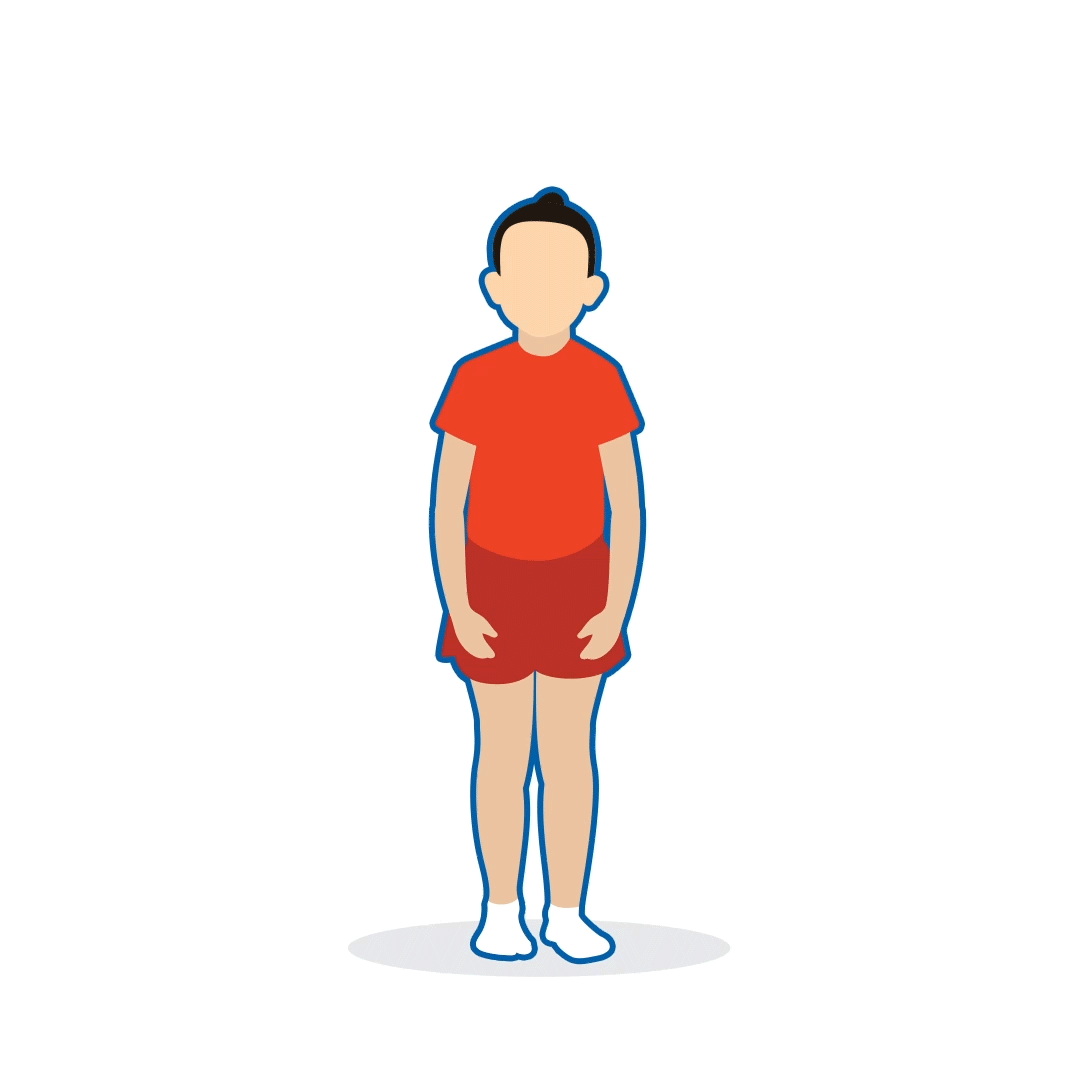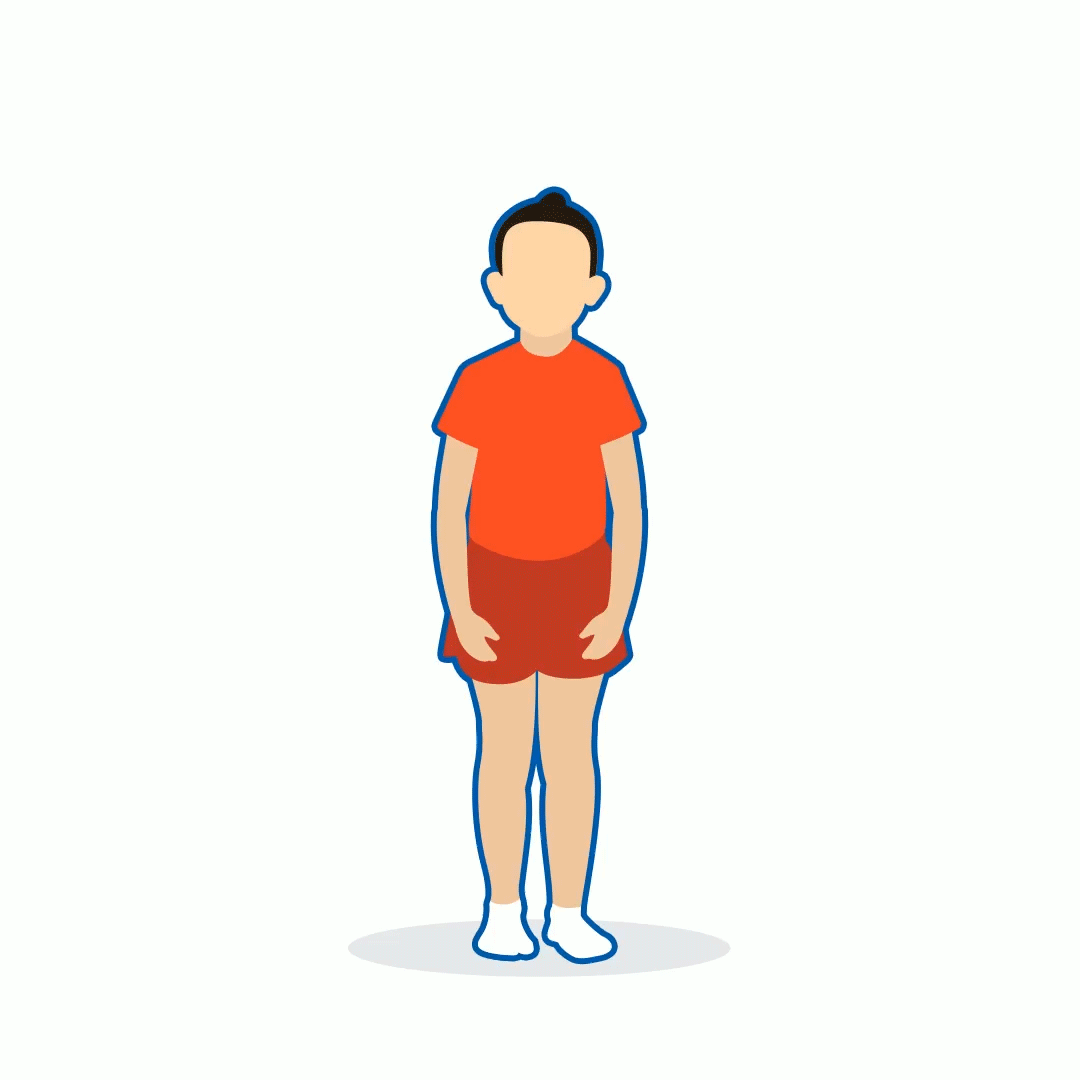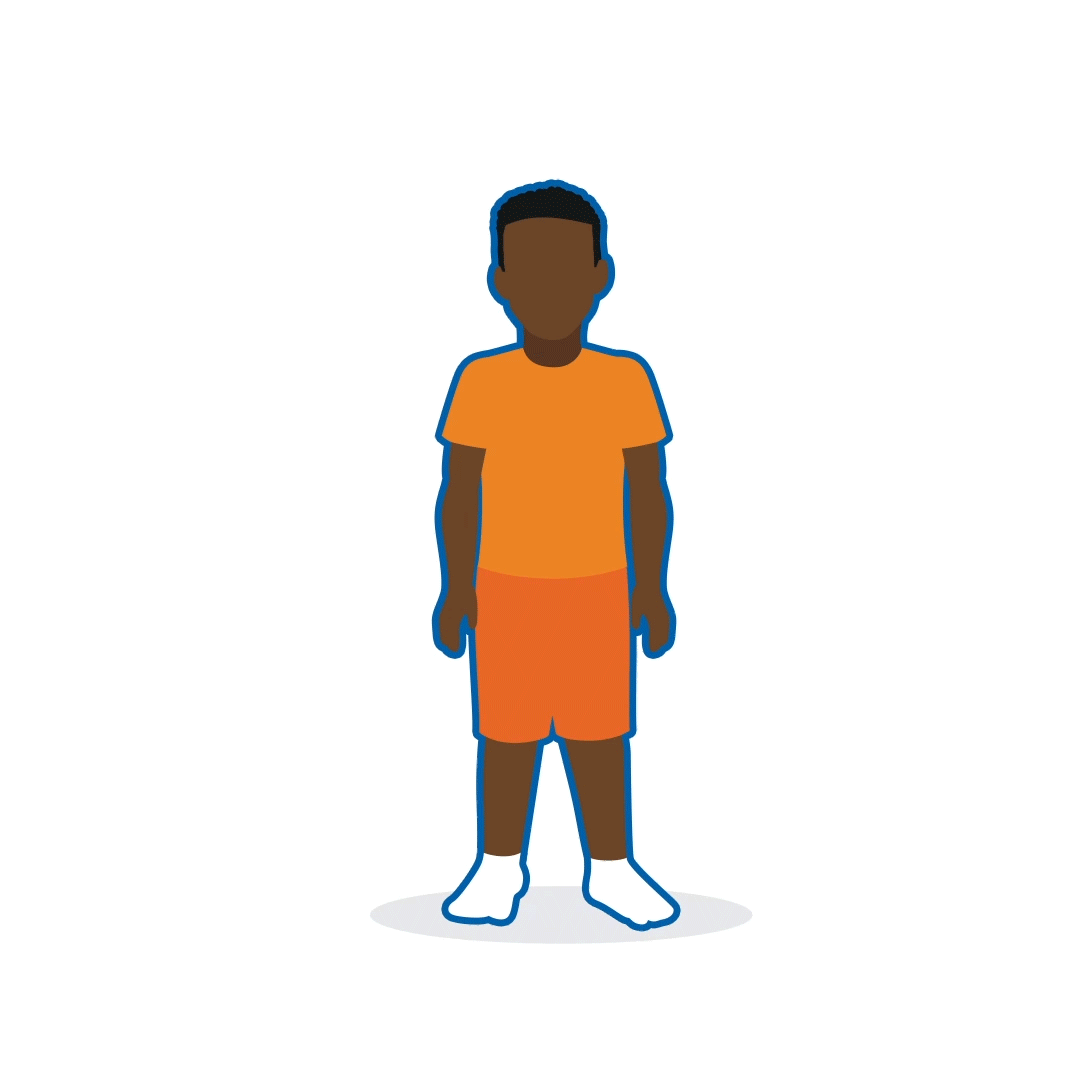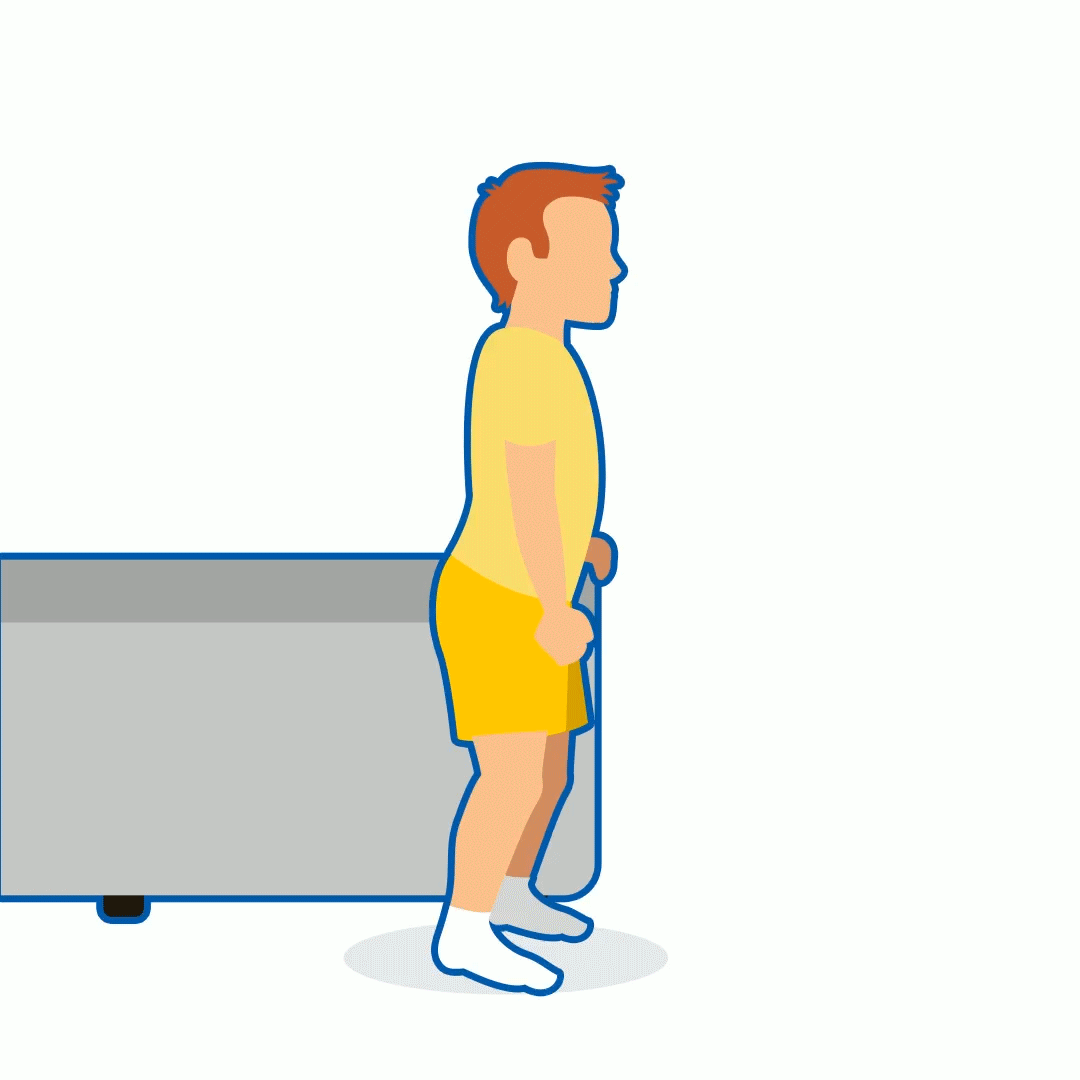What to know
- Proximal muscle weakness can assist clinicians in increasing their suspicion of AFM.
- When examining children with sudden limb, neck, or trunk weakness, remember head, shoulders, knees, and toes.
- Findings of proximal muscle weakness should be used in conjunction with a thorough history, full physical exam, and other neurodiagnostic studies.
Head, Shoulders, Knees, & Toes
Unexplained proximal muscle weakness in patients can occur in some neurologic conditions and can be easily missed during exams that only focus on distal strength.
When examining patients with sudden limb, neck, or trunk weakness, for proximal muscle strength remember head, shoulders, knees, and toes.
The animations below illustrate some movements that can be useful in proximal muscle weakness assessment and are accompanied by questions that can be used to further evaluate weakness in one or more body area(s).
Lift Both Arms Above the Head
Muscle group: Shoulder Girdle
Normal movement |
Example of weakness in the right shoulder girdle |
|---|
Patients with weakness on an affected side of the shoulder girdle could have difficulty raising their arm above the head. If both sides are affected, then patients might not be able to raise both arms above the head or hold their head in a neutral position.
Consider asking:
- Are they using one limb less than normal, especially the dominant limb or refusing to use one limb?
- Can they put on a T-shirt?
- Can they give a high-five with each hand?
- Can they feed themselves?
Shrug the Shoulders
Muscle group: Neck/Shoulder Girdle
Normal movement |
Example of weakness on the left side |
|---|
Patients with weakness in the neck and muscles of the shoulder girdle that control this movement might not be able to shrug their shoulder on the affected side and have difficulty holding up the head. The head might be tilted to the affected side.
Consider asking:
- Is one shoulder higher than the other?
- Can they throw a ball overhead?
- Can they hold up their head?
- Can they tilt the head to each side and return to neutral?
- Can they push with their head against gentle pressure equally on both sides?
Raise Knees
Muscle group: Hips
Normal movement |
Example of weakness on the right side of the hips |
|---|
Patients with weakness in the hip muscles might not be able to lift the leg on the affected side, possibly not clearing the toe off the ground. Patients with weakness in both hips might also have trunk weakness and difficulty standing unassisted or unable to attempt this movement.
Consider asking:
- Are they limping or dragging a leg?
- Can they put on pants?
- Can they do a squat and recover?
- Can they lift their leg up if in a seated position?
- Can they get themselves out of the bathtub?
Reach Down and Touch Toes
Muscle group: Trunk
Normal movement |
Example of weakness in the trunk |
|---|
Patients with weakness in the trunk might lean on the stronger leg to help themselves to lower down, use their arms for additional support, and widen their stance to assist with balance. Patients may have weakness both in the trunk and hips and might be unable to stand up unassisted or perform this movement.
Consider asking:
- Are they waddling or falling while walking?
- Can they sit up or stand without support?
- Can they get a toy off the ground while standing?
- While on the floor or bed, can they roll themselves side to side?
Keep in mind that young children may not always verbalize their feeling as weakness and may just stop using or refuse to use an affected limb. Trying to assess for proximal weakness through several age-appropriate focused questions and movements can be helpful.
